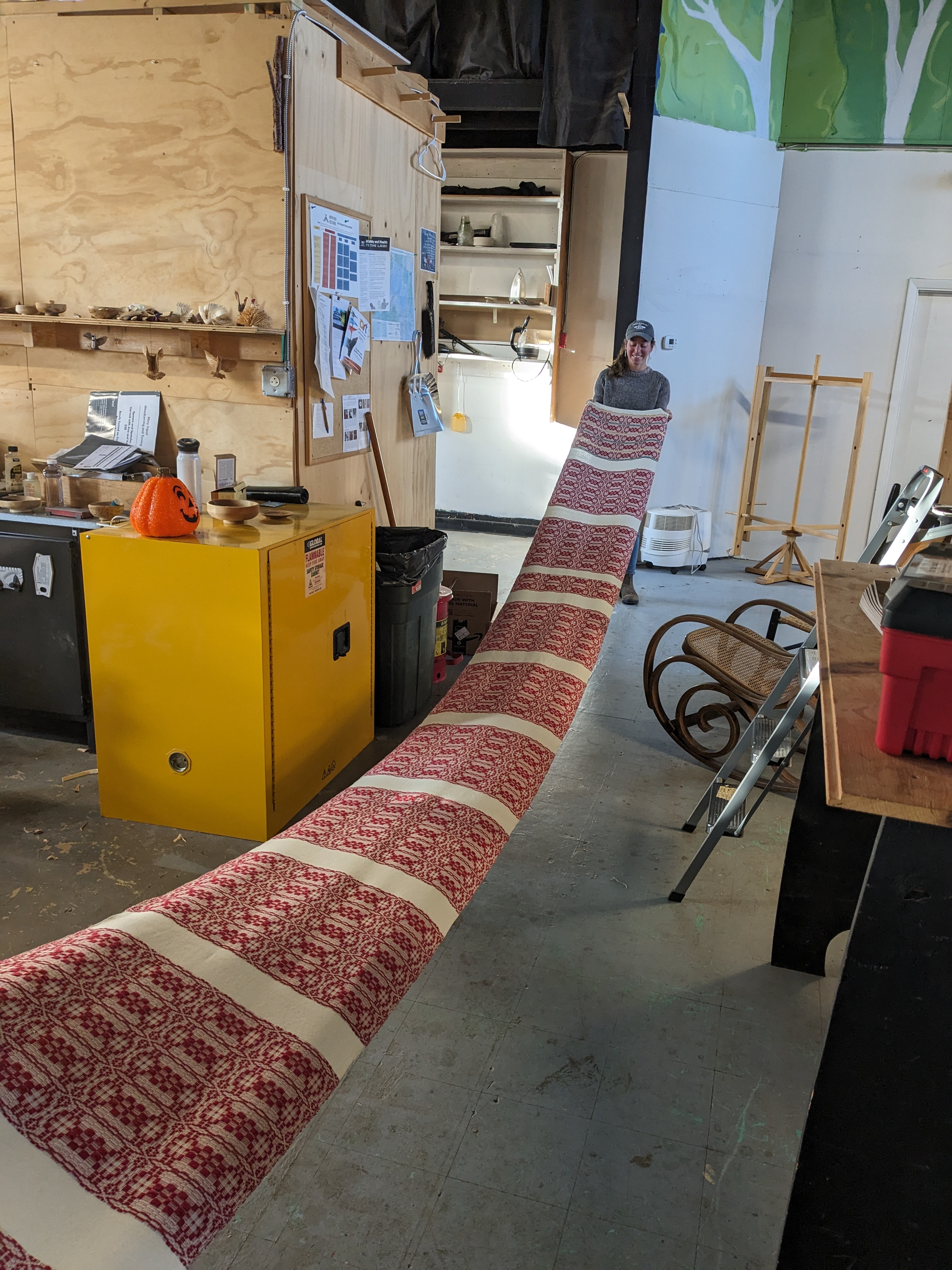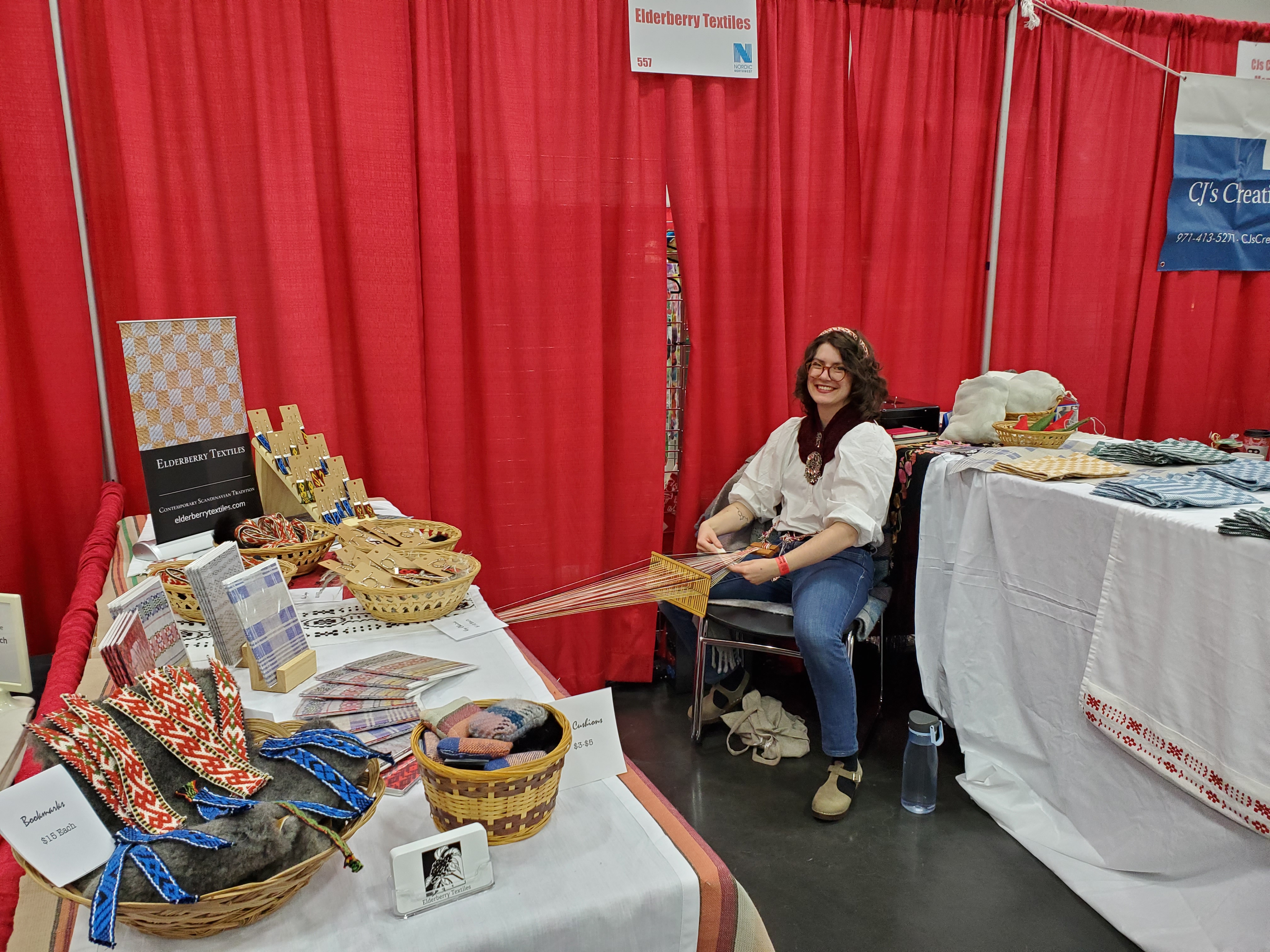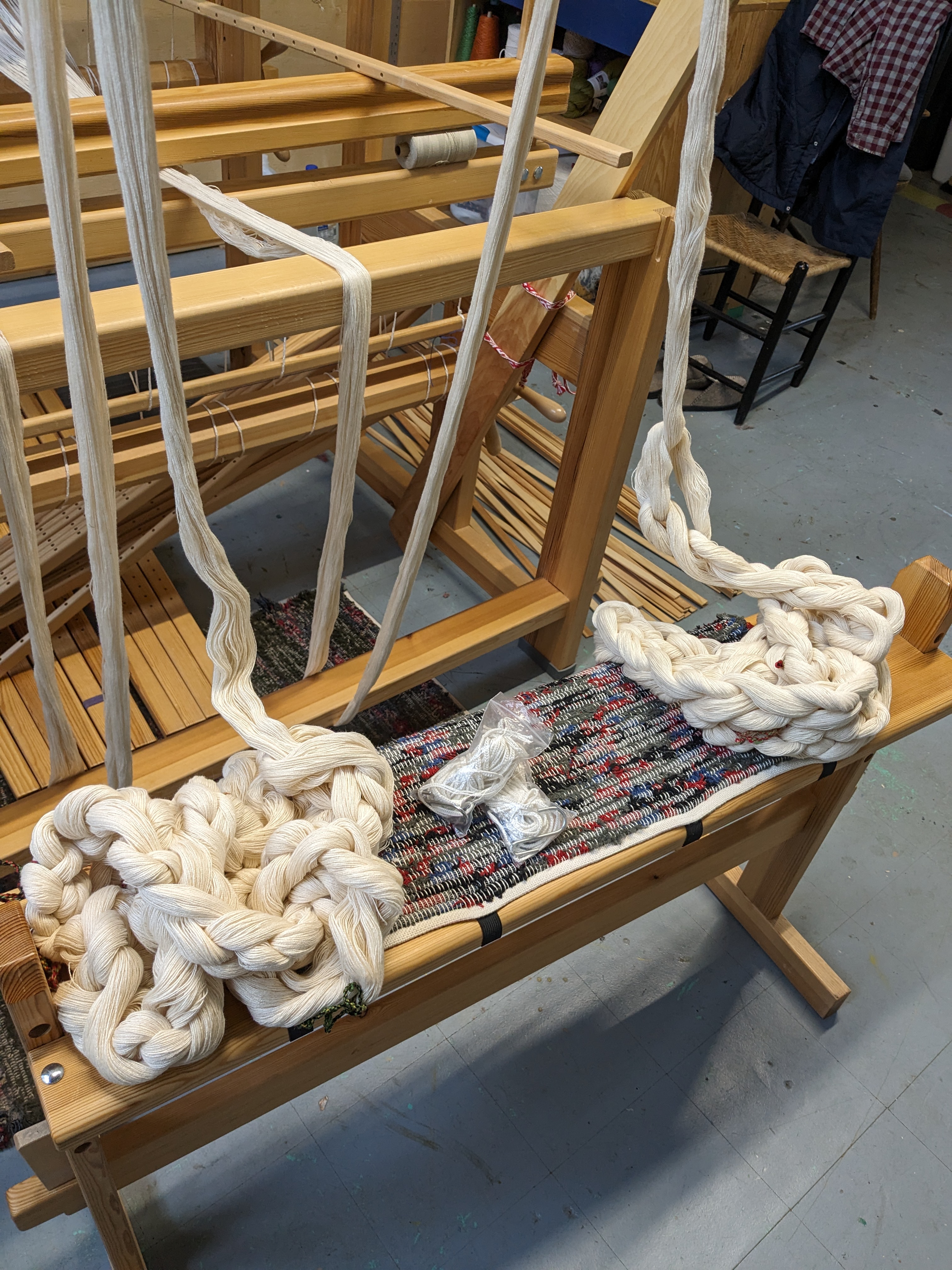
Crafting Through The Seasons

How does a working craftsperson find balance in their creative practice? In her latest blog post, Caroline Feyling discusses questions she's been pondering about seasonality, scheduling, and the pillars of a sustainable craft career.
As I enter the final quarter of my residency year at North House, I am beginning to see a shift in how I think about scheduling. Prior to the Artisan Development Program, I would have self-contained monthly goals relating to my craft practice: re-open my webstore, weave x amount of towels, apply for two grants, etc. Occasionally, these smaller goals would lead up to a larger event like a workshop or market, but for the most part, I was doing a random assortment of tasks for my craft business in no particular order.
Something I repeatedly hear from other craftspeople is the importance of scheduling and blocking out your time, both on the micro and macro level. The four main pillars of many craft businesses are teaching, production, commissions, and personal projects. Every craftsperson I have spoken with has their own formula for “seasons” they assign to those pillars, and that is where I am beginning to see a shift in my relationship with time management.

The first lesson about time and craft is one I had actually learned a few months before I applied for ADP: you can’t do production all year round. I found myself getting more and more burnt out from market prep as I neared the 2022 holiday market season. After wrapping up my final market, I decided that I couldn’t continue at that pace and would instead focus on two or three large events a year. This decision prompted me to think more about what I would be doing with my time if I was not focused on production year-round.

The next event that prompted me to reassess how I thought about my year in relation to craft was class scheduling. My permanent residence is in Oregon, which makes returning to North House to teach a large commitment. Going forward, my return trips will consist of multiple teaching obligations at North House and other craft institutions. Given that I am teaching multiple classes back to back, I will need the entire month prior to prepare for my teaching trips. Thus every teaching block in my year is two months long.

With teaching and large events as my set points in my year, I am then able to segment my time so I am prepared for all my commitments in good time. The big difference in this mode of thinking about my schedule is that I essentially only focus on one pillar of my craft career at a time. Previously I was doing a little bit of everything at once, which led to little progress being made in any single direction.
Going forward, I will be embracing the seasons of my year as a craftsperson. Teaching in the winter, production in the summer into fall, and so on. It is my hope that focusing on areas of my craft practice in short bursts will also help prevent the burnout I felt after constantly focusing on production. The biggest challenge I see going forward is scheduling time for personal projects and exploration. Perhaps that is the one pillar that transcends season? Either way, I am excited to see how my craft career changes and grows as I lean into the seasonality of making.